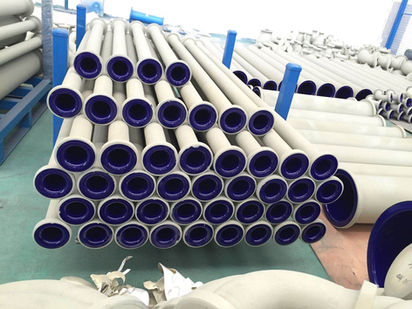

Glass lined tank and pipeline
Combine acid-resistant glass substances with industrial glass properties and metal materials to obtain a glass-metal composite. The glass covering layer has the properties of acid-resistant glass, such as strong corrosion resistance, high chemical stability, compactness and non-porous. The glass-lined container is made of high-silica glass-lined glaze through multiple high-temperature calcinations at about 900 degrees Celsius to make the glass-lined glaze adhere to the surface of the metal material. The thickness of the glass-lined layer is generally 0.8 to 1.5 mm. As the glass-lined layer protects the metal, the glass-lined container has excellent corrosion resistance. The production of glass-lined containers requires an experienced technical team, a complete set of sound manufacturing equipment and testing.






